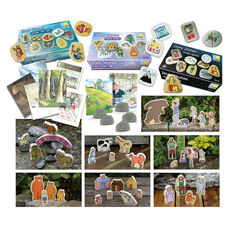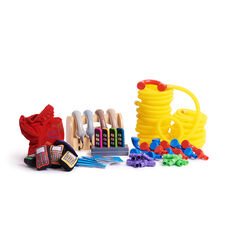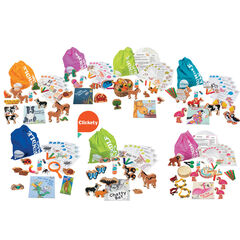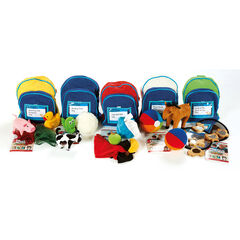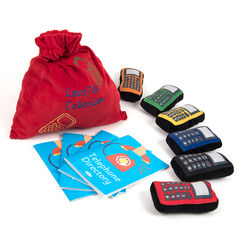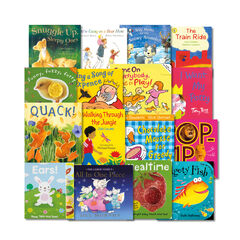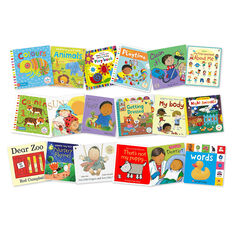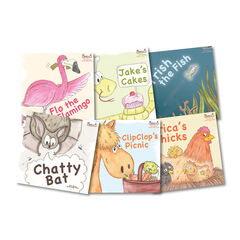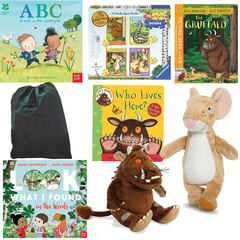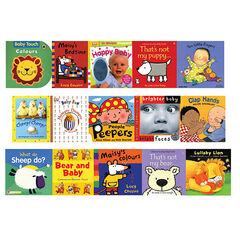If you want to understand the impact that oracy can have upon a child’s future outcomes, you need to look deeper into Early Years. In this blog, Mike Gardner examines the importance of oracy as a foundation for learning and development for our youngest learners. From the formal assessments through to strategies for parental engagement, read on to deepen your understanding of the power of oracy.
Why is oracy important for 0 to 3s?
Whilst the majority of teachers are focused on boosting oracy within the classroom, the impact of effective language development begins much further back in a child’s journey. Studies show that even in the womb and into infancy, very young children are beginning to make sense of language and communication.
The World Health Organisation (WHO) identifies infancy and early childhood as unique windows of development, during which the brain is highly receptive to linguistic and social input. While a baby’s communication may seem limited, they are, in fact, absorbing language and social cues like “sponges.” This makes the quality of language and interaction around them from day one vitally important. We therefore need to pay greater attention to the quality of language we are immersing them within.
But how do we know early oracy has an impact?
Studies have shown that oracy is a strong predictor of future academic performance. As the diagram shows, getting our pre-school children confident with understanding and using language has a ‘domino effect’ as they enter Early Years and primary education. Those with the broadest vocabulary, the clearest articulation and the ability to comprehend the spoken word are going to become the most able readers; in turn, they are more able to excel academically as they can more easily access learning and develop their own thinking further than others.

However, not every child experiences a positive start to life and the language gap has continued to widen between children from different social backgrounds. Thirty years ago, Hart and Risley’s (1995) landmark study measured the volume of words heard by children from a range of social classes. Their findings calculated a ‘30 million word gap’ between the professional home settings and those in the most deprived communities.
Their findings were stark:
- Welfare-dependent families: Children heard 620 words per hour, totalling approximately 13 million words by age four.
- Working-class families: Children heard 1,250 words per hour, totalling about 26 million words by age four.
- Professional families: Children heard 2,150 words per hour, resulting in 45 million words by age four.

The evidence gives us a clear picture of the importance of developing oracy in our under-threes. If we can get our children hearing and responding to frequent, quality language, they will be better positioned for the world they are entering.
Oracy and EYFS – the perfect partnership!
Whilst ‘oracy’ as a term may have only recently appeared on many educator’s radars, it is by no means a new ‘fad’. From the works of Vygotsky and Bruner in the mid-20th Century, oracy has been integral to our pedagogy albeit under many different guises (think ‘speech and language’, ‘communication’, ‘learner-led talk’, ‘metacognition’ and more).
When we examine the EYFS Profile, we can begin to identify the areas where oracy fits.

Every Early Years professional across the country will know these areas of learning well and everything they teach towards and plan for in their provisions will be targeted at developing these skills. In effect, our EYFS staff are the ‘experts’ in oracy and other teachers from higher up the year groups should be collaborating with their Early Years teams on boosting oracy across the school.

Parents as the teachers
Schools and settings begin to have a significant impact upon children from the age of 3 (or 4) onwards. Yet, as research shows, a child’s school readiness regarding language is a product of the first three years of their lives. To boost oracy at this pre-school stage of development, we need to equip parents and families. If parents have a better understanding or oracy and they know how to nurture a language-rich environment at home, their children’s oracy will flourish.
One strategy for parents is ‘Child-directed speech’ (CDS), which refers to the way in which parents speak with their children. CDS emphasises the need for caregivers to interact purposefully with their child to scaffold the journey through early oracy.
In the table below, several CDS strategies have been broken down into example actions and show how they positively impact oracy.

The power of reading for oracy
Even though younger children are not at the point of independently reading, many studies have highlighted the importance of shared reading for oral development.
Since 2019, The National Literacy Trust (Picton et al, 2024) has been conducting national surveys to assess the levels of engagement with children’s literature at home. Their findings paint a bleak picture of reading, both generally and particularly for the most deprived children across the UK. In their latest report, their results show:
- 50.5% of parents read daily with their child, a decrease from 66% in 2019
- 46.4% did shared reading with their child daily
- 22.4% of families reported having fewer than ten children’s books in their home
- 19.5% had not visited a library at all in the past 30 days
Children who regularly engage in shared reading gain exposure to more mature linguistic vocabulary (Hart and Risley, 1995); those who don’t, fall further behind from an early stage. The language input young children absorb from stories directly influences their oracy, broadening their vocabulary schema and opening their eyes to the contextual meaning of new words.
Hayes and Ahrens (1988) found that children’s books offer an especially rich source of exposure to advanced vocabulary that children might rarely, if ever, encounter in everyday conversations.
In summary, when children hear a broader range of vocabulary, grammatical structures, idioms and descriptive language, they begin to integrate this into their schema (what they already know) and eventually rehearse and apply it through their own speech.
If we get it right early on…
Early intervention is crucial for every child’s oracy development. Waiting till a child is entering Key Stage One is too late and the language gap will become too wide to close. Working closely with parents is fundamental for nurturing language development from baby to infant to pupil.
Further blog posts that you may be interested in:
If you have enjoyed reading this blog on oracy and would like to find out more, then why not click on the link below to take a look at some of our other blogs written by Michael Gardner, Sal McKeown and other teachers and practitioners from a range of nurseries and settings. Click here for further blog posts on oracy.
Explore resources to support oracy
Written by Michael Gardner, who is the founder of ‘The Oracy Shift’ [theoracyshift.co.uk]. Michael has over 13 years experience teaching and leading across Primary, from Nursery through to Year 6. If you’re curious about making oracy central to your school’s pedagogy, get in touch with Michael at www.theoracyshift.co.uk [theoracyshift.co.uk] or find The Oracy Shift on LinkedIn.




